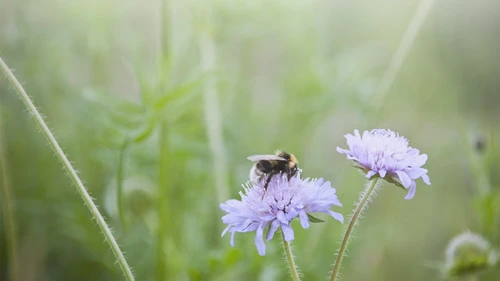According to the The World Bank more than
50%
of the global gross domestic product (GDP) depends on natural resources.
Denne siden findes ikke på norsk
Bli værende på denne siden | Fortsett til en lignende side på norskProductive and stable economies are dependent on sufficient natural resources and well-functioning ecosystems. In this explainer we dive into why biodiversity has become increasingly important to banks and the role it plays in our own sustainability strategy.

Biodiversity describes the vast variety of life on earth. It refers not only to species but also ecosystems that we rely on for fertile soils, pollination of crops, clean water, carbon uptake and flood protection. The diversity and interaction of animals and plants keep ecosystems functioning and our economies productive.
Bees, for example, are necessary for pollinating crops. After the crops are harvested, the leftover plant material provides food for insects and microorganisms living in the soil. They break down the plant material, releasing nutrients back into the soil, which keeps it fertile and active as a natural resource for the agricultural sector.
50%
of the global gross domestic product (GDP) depends on natural resources.
Biodiversity is closely linked to climate change. When ecosystems are damaged, they store less carbon and can even release more greenhouse gas emissions, worsening climate change. Climate change is also a driver of biodiversity loss, not least in the Nordics where temperature increases are higher than in many other places, making it challenging for species to adapt.
Biodiversity has declined sharply over the past 50 years and at least one million species are threatened with extinction in the coming decades. The World Economic Forum’s 2024 Global Risks Report ranks biodiversity loss as one of the top three threats that humanity will face in the next 10 years. Protecting biodiversity is therefore crucial for economic stability and future growth.
For banks and other financial institutions this means that biodiversity is becoming an increasingly important factor in financing and investment strategies. At Nordea we engage in dialogues with our customers on this topic to support them as their financial partner.
It’s about managing risks and opportunities, making informed decisions and contributing to sustainable economies. Since biodiversity is still a new topic for the financial sector, work is ongoing to develop processes and methods, collect data and over time set targets.
Our commitment to biodiversity is part of our broader sustainability strategy. We have moved forward when it comes to incorporating climate considerations into our business – and we will now make the same journey with biodiversity.
It is a complex task, as biodiversity has local dimensions that can be challenging for financial institutions to capture and manage across diverse investment and financing portfolios. Despite these complexities, we want to contribute to societal efforts to stop and reverse biodiversity loss and nature degradation.
A first step in this work is our thematic guideline on biodiversity and the topic is also included in several of our sustainability sector guidelines.
We are also part of a working group on biodiversity under the United Nations Environment Finance Initiative (UNEP FI). The working group was established to provide guidance and recommendations on how banks can set biodiversity and nature-related targets. It consists of more than 30 banks which have all signed the Principles for Responsible Banking (PRB) as well as world-leading nature finance experts. In addition to this work, we participate in several initiatives such as Finance for Biodiversity pledge and Nature Action 100.
We also want to support scientific development of the field – both to benefit society and to help us build a science-based approach. Therefore we have made a donation to support a four-year research programme on biodiversity at the University of Jyväskylä.
The research will help develop methods for assessing the biodiversity impact of economic activities funded by financial institutions. The focus is on the Nordics and builds on the work of the research group at the University of Jyväskylä, which has previously been applied to Finnish companies and institutions. Research findings will be shared to help advance this field and support the overall sustainability transition of societies.

Sustainability
Anna-Karin Modin-Edman is Nordea’s resident biodiversity expert. She explains why the theme is climbing corporate agendas, the main challenges and how companies are tackling them.
Read more
Sustainable banking
Today the United Nations Environment Finance Initiative (UNEP FI) publishes the first industry guidance on biodiversity where Nordea has been part of the working group. In this connection Nordea publishes its first thematic guideline on biodiversity.
Read more
Sustainability
EU companies recently reported their alignment with the EU Taxonomy for the second year in a row. For the first time, they also reported their eligibility under four new environmental objectives: water, pollution, biodiversity and circularity. The results bode well for companies' overall Taxonomy alignment numbers next year, according to Nordea's ESG Research team.
Read more